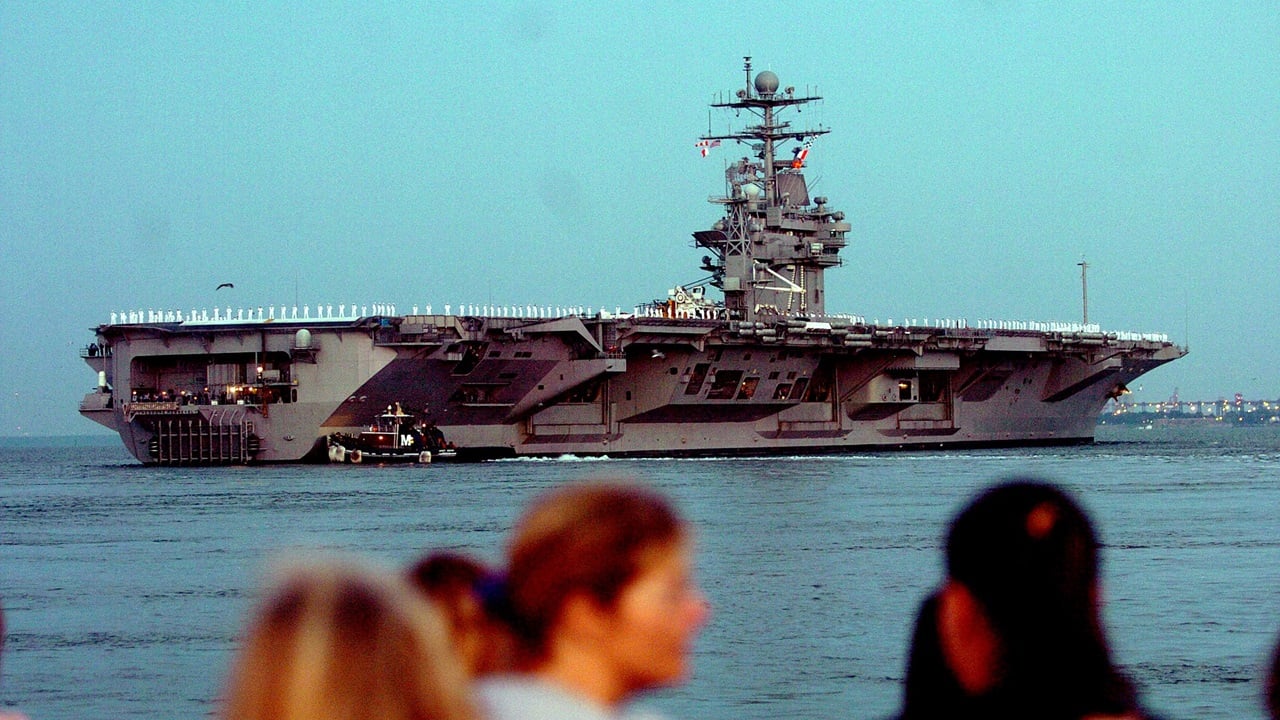Nimitz-Class: The Aircraft Carriers the Navy Can't Do Without
The U.S. Navy faces significant challenges as it seeks to extend the service lives of Nimitz-class carriers to maintain its eleven-carrier fleet amid Ford-class production delays. Originally designed with a 50-year lifespan, many Nimitz carriers are reaching their limit, with retrofitting complicated by unforeseen repairs, including major steam turbine damage.
What You Need to Know: The U.S. Navy faces significant challenges as it seeks to extend the service lives of Nimitz-class carriers to maintain its eleven-carrier fleet amid Ford-class production delays. Originally designed with a 50-year lifespan, many Nimitz carriers are reaching their limit, with retrofitting complicated by unforeseen repairs, including major steam turbine damage.

-The USS George Washington and USS John C. Stennis, both undergoing lengthy overhauls, have experienced extensive delays, straining Navy deployment schedules.
-Additionally, poor living conditions for sailors aboard retrofitting vessels, such as the George Washington, have led to serious morale issues, including several sailor suicides, raising urgent concerns.
Nimitz-Class Carrier Extensions: Delays and Challenges for the U.S. Navy
The U.S. Navy has been forced to rely on their Nimitz-class aircraft carriers for longer than expected. The Nimnitz-class, which first debuted in 1975, has a fifty-year service life. For the namesake vessel, the first-off-the-line USS Nimitz, that fifty-year threshold is fast approaching. The remaining Nimitz carriers were rolled out over thirty-five years, and now many more are also approaching their fifty-year thresholds.
Yet, the Navy has been slow to produce the Nimitz’s replacement, the Ford-class. To date, only one Ford-class, the USS Gerald R. Ford, has been commissioned, while a second is on the way. To maintain current fleet levels, eleven active aircraft carriers, the U.S. Navy is working to extend the lifespans of their Nimitz-class carriers.
The process has not gone smoothly.
Why Extend?
The Pentagon is committed to maintaining current levels for their carrier fleet. One could argue that the U.S. Navy does not need eleven supercarriers. Restraint advocate Barry Posen argues that seven to nine supercarriers would probably be sufficient to address all of America’s national security concerns. But the Pentagon feels otherwise, obviously, flare-ups in the Middle East, and rising tension throughout the Indo-Pacific, no doubt partially inspiring the commitment to maintaining current fleet levels. Delays to the Ford-class are no doubt another reason.
The forthcoming USS Enterprise, the third Ford-class carrier, will be delayed eighteen months.

“Extending Nimitz, extending Ike, it’s going to happen for every Nimitz-class carrier. At least one extension,” Vice Admiral Kenneth Whitesell said last year.
Yet the Nimitz extensions have not gone smoothly. Delays in the retrofitting process have been common.
“Extensive delays to the mid-life refueling and complex overhauls of two nuclear-powered aircraft carriers were due to damage to the steam turbines that power the ship,” the U.S. Naval Institute (USNI) reported. The two carriers in question were the USS George Washington and the USS John C. Stennis. Each carrier was supposed to undergo a four-year overhaul. But the Washington needed nearly six years; the Stennis will need five and a half.
“The change in redelivery schedule for [Stennis] is primarily a reflection of growth work discovered after the ship arrived at Newport News Shipbuilding (NNS) and subsequent challenges within the supply base,” Huntington Ingall’s Industries (HII) NNS said in a statement. “We are applying lessons learned from both George Washington and John C. Stennis to what we are doing to prepare USS Harry S. Truman (CVN-75) for refeuling and complex overhaul”
The delays have complicated the Navy’s ability to deploy carriers, and have also degraded the quality of life for the sailors aboard the vessels being retrofitted; a 2023 Navy investigation found that sailors aboard the George Washington, “endured some of the toughest living conditions of any members in the military.” Several of Washington’s sailors committed suicide.
About the Author:
Harrison Kass is a defense and national security writer with over 1,000 total pieces on issues involving global affairs. An attorney, pilot, guitarist, and minor pro hockey player, Harrison joined the US Air Force as a Pilot Trainee but was medically discharged. Harrison holds a BA from Lake Forest College, a JD from the University of Oregon, and an MA from New York University. Harrison listens to Dokken.
Image Credit: Creative Commons and/or Shutterstock.


